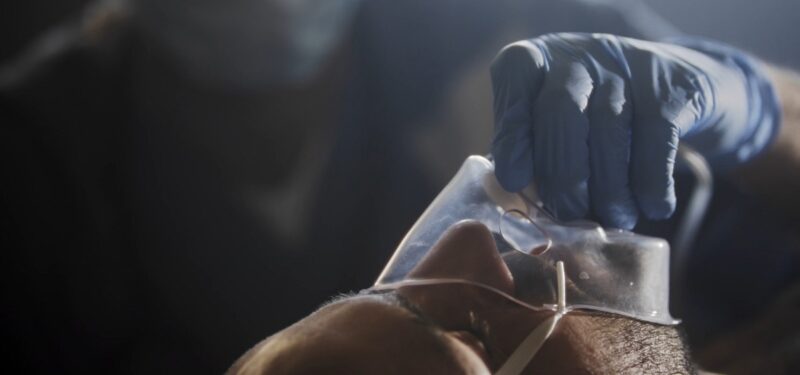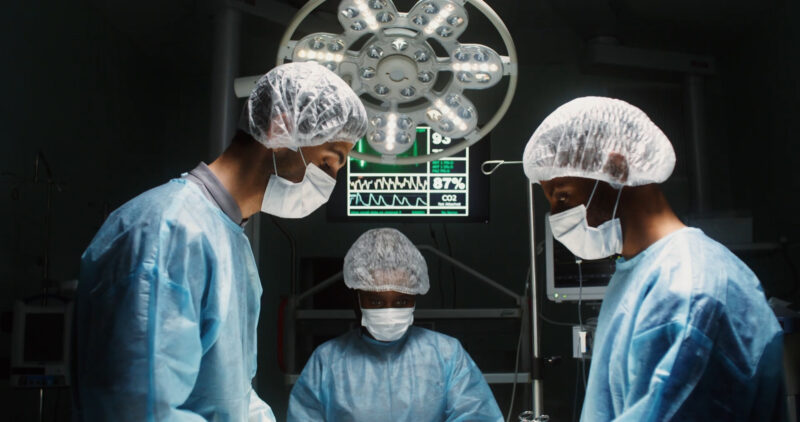Back surgery sounds like a straightforward solution for chronic pain, right? Fix the issue, and life goes back to normal. Well, if only it were that simple. The reality is far more complicated.
Surgery on the spine comes with a list of potential complications that could leave patients worse off than before. So, before jumping onto the operating table, it’s worth looking at the risks involved.
Common Pitfalls of Back Surgery
A journey under the knife for spinal issues involves more than a fancy hospital gown and a blissful nap under anesthesia.
Below are some of the potential stumbling blocks that can derail a well-intended quest for relief.
Infection

Incisions, no matter how small, create avenues for germs. Bacteria absolutely adore open invitations. Some infections remain superficial, affecting only the skin. Others strike deeper levels, traveling right around spinal cord structures or vertebrae.
The University of Maryland Medical Center points out that the chance hovers under 1%, but infections in that region carry serious consequences when they do occur. Antibiotics may help, but in severe cases, additional procedures might be required.
Nobody wants to schedule a repeat trip to the operating room because a microscopic party took over.
According to J J P Schimmel, in general, infection rates following spine surgeries vary based on factors such as the type and complexity of the procedure. Reported rates range from 0.7% to 11.9%, depending on the diagnosis and complexity of the procedure.
Blood Clots

A hospital bed is rarely the epitome of motion. Immobility allows blood to pool in the legs, creating a risk of deep vein thrombosis (DVT). Then there’s the horrifying possibility of a clot deciding to relocate to the lungs, triggering a pulmonary embolism. That scenario can be life-threatening.
The Royal Orthopaedic Hospital advises patients to “keep moving or walking and get out of bed as soon as you are able after an operation.”
Let’s be honest: hobbling around a hospital corridor with an IV pole isn’t the highlight of anyone’s day, but it beats having a lethal clot wreak havoc.
Nerve Damage
Placing sharp instruments anywhere near delicate nerve pathways is a recipe for potential disaster. Cutting into the spinal region is like playing Operation on the hardest setting—minus the comedic buzz when a slip happens.
Errant movements or accidents can lead to problems such as numbness, muscle weakness, or outright paralysis. The American Society of Anesthesiologists has made it clear: higher stakes come with surgeries around the central nervous system.
Dural Tears
The dura is a protective membrane that envelops spinal nerves like bubble wrap. Accidental nicks can cause cerebrospinal fluid leaks, leading to relentless headaches. If a tear gets noticed on the operating table, surgeons can often patch it right away.
It’s when it stays hidden that an unwelcome surprise might greet the patient after surgery. Subsequent fixes may require another round of procedures.
Bleeding and Hematomas
Back surgery sometimes involves significant blood loss. That’s why medical professionals keep a close eye on blood pressure and hemoglobin levels. Hematomas—pockets of blood outside blood vessels—can show up if bleeding becomes considerable.
The presence of a hematoma near spinal nerves may lead to added pain or even neurological issues if the pressure grows high enough.
The Mayo Clinic flags bleeding as a notable hazard in spinal fusion procedures, which often involve more prolonged operative times. Monitoring for that complication post-surgery can feel like an additional, ongoing job.
Poor Wound Healing

Anyone who has felt dread when glancing at a healing incision knows the anxiety around wound care.
Age, nutritional status, smoking habits, and chronic conditions such as diabetes can drag out recovery. Emerging treatments, like those offered by thrivemdclinic.com, aim to enhance healing processes.
Stalled healing might open the door to infections or other nasty problems. In certain instances, plastic surgery or further spinal operations become a necessity to fix unrelenting complications.
There’s a good reason surgeons encourage patients to quit smoking well before a scheduled procedure. Nicotine is no friend to quick and clean healing.
Adjacent Segment Disease (ASD)
Spinal fusion procedures carry a reputation for sometimes prompting stress on neighboring segments. Imagine fusing one spot; the rest of the spine still has to bend, twist, and carry loads.
Extra force on the adjacent vertebrae can speed degeneration, leaving patients to puzzle over fresh aches a few years down the road. Another surgery could lie in store if the newly stressed segment deteriorates enough.
It’s a bit like patching one leak in a roof, only to discover dripping water in the attic soon after.
The Mayfield Clinic notes that fusing vertebrae stops natural motion at that level, which can lead to degenerative changes in the discs and joints above or below the fusion site.
This is because the spine functions like a chain, and immobilizing one link can transfer additional stress to the next, potentially leading to symptoms when the bones become misaligned, nerves become pinched, or the spine becomes unstable.
Pseudarthrosis
Fusion aims to meld vertebrae into a single, stable segment. Unfortunately, the bone graft can fail to solidify, leading to a phenomenon called pseudarthrosis.
That scenario typically triggers lingering pain and might require revision surgery. Some patients get to enjoy the distinct pleasure of hardware removal or replacement if rods and screws no longer provide the stability that was anticipated.
Anesthesia-Related Complications

Snoozing in the operating suite feels like an instant for many. One moment, the anesthesiologist says, “Count to ten,” and the next, a nurse is calling your name in recovery.
Yet those blissful moments of oblivion carry potential concerns, including allergic reactions, breathing difficulties, or cardiovascular hiccups. Thorough conversations with the anesthesia team help identify any personal red flags ahead of time.
That awareness might be crucial for preventing a complication. After all, waking up mid-procedure may be the stuff of nightmares, but severe anesthesia incidents can be even scarier.
Persistent Pain or Failed Back Surgery Syndrome (FBSS)
A brand-new wave of discomfort can crop up if nerve compression persists or arises from scar tissue, hardware complications, or misdiagnosis. “Failed Back Surgery Syndrome” isn’t a label that anyone wants to earn, but it exists.
Surgeons might do everything by the book, yet the body occasionally refuses to cooperate. Pain that lingers (or even worsens) can feel supremely frustrating after dealing with the stress and expense of surgery.
Some patients will spend months in additional therapy, searching for a solution that remains elusive.
Factors That Elevate Risk
Not every individual who chooses a surgical route faces the same odds. Several variables can boost hazards:
- Patient Age: Older adults have less physiological resilience and may bring more chronic conditions into the operating room.
- Overall Health: Conditions like obesity, diabetes, or cardiovascular diseases hamper healing and increase the possibility of complications.
- Smoking: Nicotine sabotages circulation and can encourage infection or slowed bone healing.
- Previous Surgeries: Scar tissue from earlier procedures can complicate new operations, making nerve pathways harder to navigate.
A surgeon typically reviews a patient’s medical background and lifestyle choices before writing the final plan. Every extra risk factor potentially tilts the scale toward problems during or after an operation.
Approaches to Lower the Odds of Complications

An ideal scenario involves gleaning every advantage possible before heading into the operating room. Some methods can help tip the balance in a favorable direction.
Meticulous Preoperative Evaluation
Physicians usually order imaging studies—MRIs, X-rays, CT scans—to confirm the location and severity of spinal issues. Blood work and cardiovascular assessments may also come into play, especially in older patients or those with known medical conditions.
That process can reveal hidden pitfalls well before a surgeon reaches for the scalpel, sparing everyone unwelcome surprises on the day of the procedure.
Choice of Surgical Technique
Less invasive approaches can reduce muscle dissection, postoperative pain, and scarring. Options such as laminotomy instead of laminectomy involve removing less bone while still attempting to relieve pressure on nerves. Not every condition qualifies for a minimally invasive technique, but patients often inquire about it.
Indeed, the more advanced robotics and endoscopic techniques become, the more surgeons can reduce postoperative agony. It’s one area where medical science strives to bring good news.
Comprehensive Postoperative Care
Strictly following rehabilitation instructions can cut down on complications dramatically. Patients who engage with physical therapy, perform prescribed exercises, and take medication as directed often see improved outcomes.
That dedication might feel irritating—especially when pain flares up—but the alternative can mean longer healing times and additional complications.
Healthcare providers typically emphasize gradual increases in activity and consistent follow-ups to detect issues early. Spotting a problem in its infancy stage offers a better chance at resolution.
The Role of Second Opinions
Major decisions deserve input from multiple professionals when possible. Another surgeon or specialist may present alternative procedures or suggest additional tests to clarify the situation.
Even a consultation that confirms the same plan can bring peace of mind. In a scenario as significant as back surgery, a patient’s comfort level with the recommended approach matters. After all, the emotional burden alone can be immense.
Summary
Surgery on the spine might conjure images of heroic doctors and dramatic transformations. In reality, complications and setbacks can lurk around every corner. That doesn’t mean every person who pursues surgical intervention is doomed.
It does mean thorough research, consultations, and an honest look at personal health status are vital before signing that consent form. Some people find relief and a renewed sense of mobility, while others confront ongoing pain or additional interventions.
The final decision remains a personal one, best reached after weighing potential pros and cons with trusted medical professionals. No one else can carry that responsibility, even if the cheering section insists otherwise.
A well-informed choice, bolstered by realistic expectations, offers the greatest chance of a worthwhile outcome—even if a touch of luck doesn’t hurt.
Related Posts:
- Can Hernias Affect Your Back? 9 Key Facts to Know
- Spondylolisthesis Surgery - What are the Risks and…
- What is Ambulatory Surgery? - Everything You Need to Know
- Top 13 Healthcare Jobs That Don’t Know You Need Experience
- Direct Hernia vs. Indirect Hernia: What You Need to Know
- What’s Behind Gluten Sensitivity? 10 Causes You Need to Know















